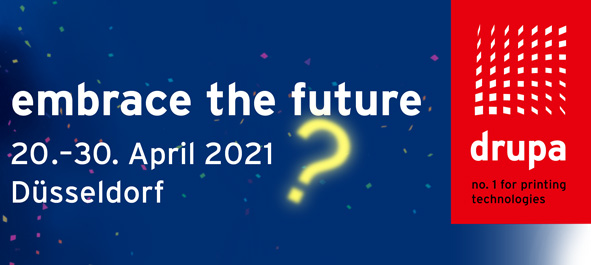Trade fairs have been under pressure in recent years. Cancelling most events in 2020 is making vendors considering their stance towards trade shows once more. So far drupa has been beyond discussion as the one trade show in which a vendor needs to exhibit to be taken seriously in the printing industry. Product and technology development plans have been timed for this show to maximise impact. Now drupa being moved to 2021 wreaks havoc to many plans and a good share of vendors decided to hold virtual launch events instead.
Two major vendors bailed out of drupa 2021 recently and opted for virtual events. Xerox cited insecurity around large events during a pandemic. Bobst announced that it was cancelling its participation at most trade shows, including Drupa, citing several reasons: A change in strategy to forego trade shows (except selected few in Far East) in favour of virtual events and experience centers, environmental reasons and that 2021 is already “full” for Bobst.
Virtual press conferences
As the first of the major vendors which cancelled their drupa participation for 2021 Bobst held an international press conference on the 9th of June. Several articles have been written on the launches presented, but I would like to focus on the underlaying question: how well does a virtual event as a substitute for a trade show participation.
First kudos to the event organisers. According to Bobst more than 100 journalists and analysts joined. The virtual press conference was well organized. The stream contained a mix of CEO Jean-Pascal Bobst talking, mixed with slides and him drawing on a flip chart (you still remember what this is?) to explain some workflow details. There was ample time for questions, also expertly moderated by Francois Martin.
Still – getting technology developments explained via a couple of slides always gives me the feel that I want to walk over and kick the tires of the new product at the booth or demo site. Given the wide range of listeners to a call it is impossible to give enough detail for the exports while not to overextend the ones that dabble in this field of expertise (or in the print industry as a whole). Crucially, as an analyst I want to learn about the important points that are not on polished vendor presentation slides, like pricing, availability, tech details, pros and cons and more. I find being able to stand in front of a piece of technology and talking to product managers, sales guys and technicians incredibly helpful. This is usually the opportunity to examine print samples as well. And you have a bit of time to let the first information settle and recall the points you want clarified.

